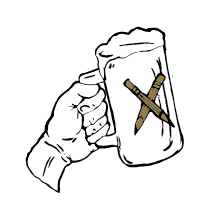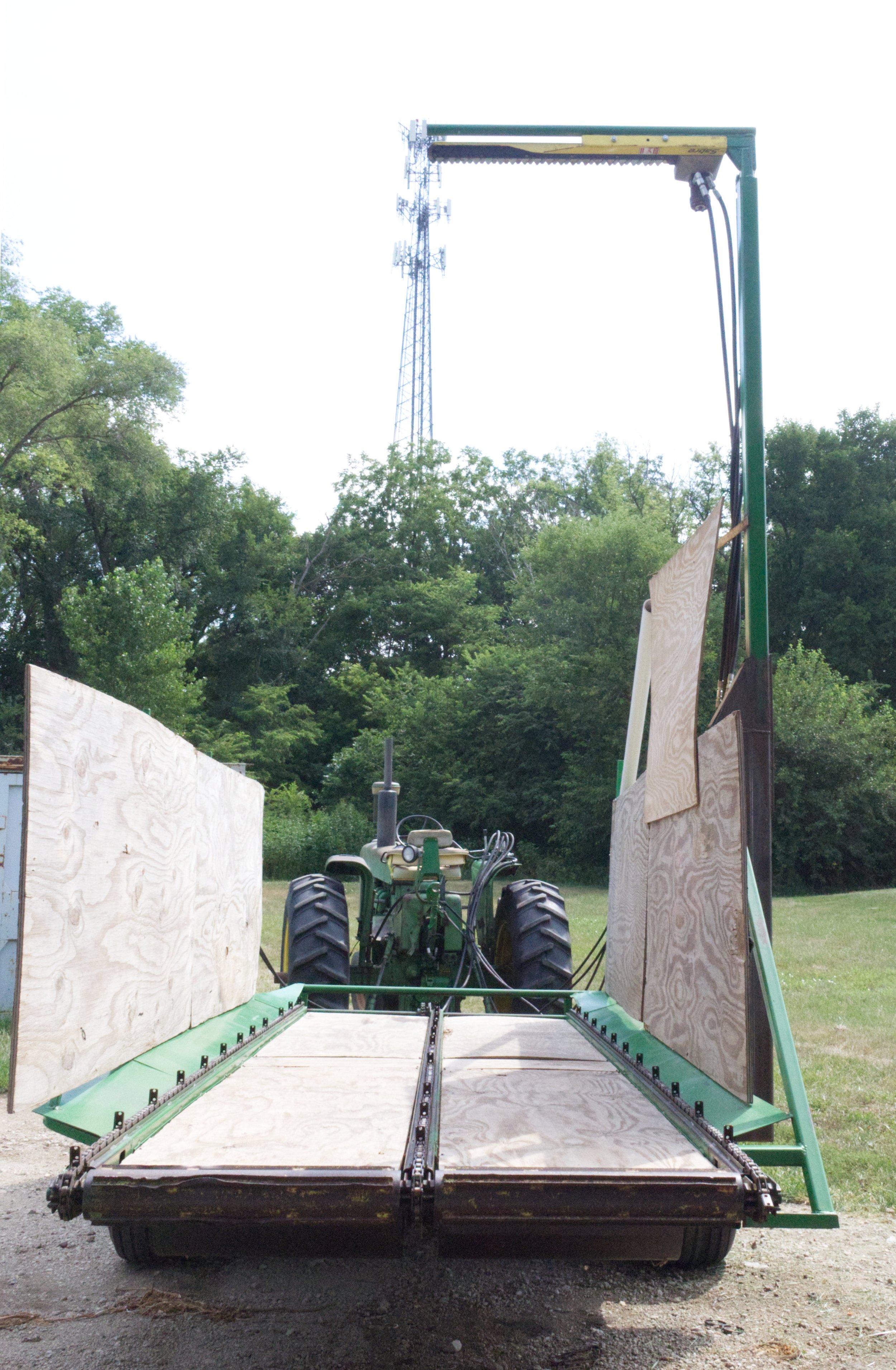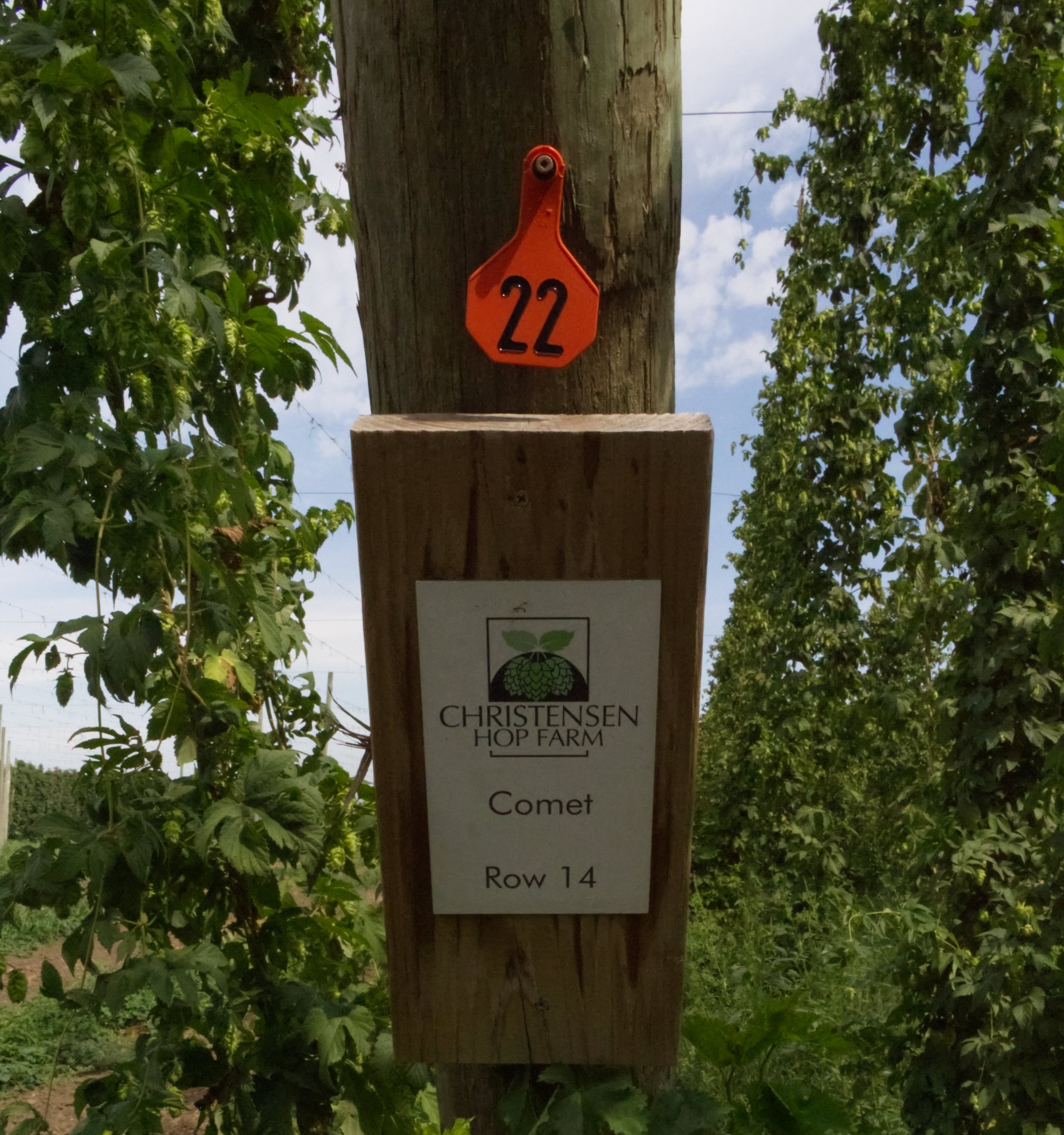The hop cone basking in the morning sunshine
When someone says the word “cone,” most people think of an ice cream or pine cone. My mind thinks about the aroma and flavor a hops cone adds to beer. The outside of the cone is very intriguing, but the contents hidden inside are the key to making craft beer.
Inside are tiny, yellow pods called lupulin, which is the source of flavor, aroma, and bitterness in beer. I remember my first visit to a hop farm a few years ago. The owner said to get the scent from the hop to put it between your two hands and roll it back and forth. The warmth and pressure release the lupulin oils providing the citrus, piney, spicey, and other aromas.
I know brewers discuss the alpha and beta acid levels in a hop. My basic understanding is that alpha acids control bitterness while beta acids dictate the aroma. A discussion for another day, but if you are interested, here are more details.
Amazing how hops train to go up the 18 foot wire!
On a bright, sunny Saturday morning, I headed to Fort Calhoun, Nebraska, to visit Christensen Hop Farm. Josh and his wife Ronee started the hop farm in 2017 and have expanded it to 7 acres and 11 varieties as of this year.
Josh was busy mowing the property as my friend Paul and I arrived. So many questions were running through my mind as were started to walk back to the field. In Nebraska, it isn’t a common sight to see rows of hops growing in a field. We are used to seeing corn and soybeans.
Josh and his family farm and also own Abe’s Trash Service. Josh said he never thought about growing hops until he did some homebrewing with his brother-in-law. Initially, the idea was to raise a few plants, but that quickly turned into 700 plants in his backyard!
Josh is a very nice guy who seems to have that entrepreneurial spirit. It didn’t take him long to see how this could become a business! Josh has a great piece of flat land south of Fort Calhoun, where the hops grow towards the blue sky.
Hops are similar to grapes in that the soil and region they grow in impact the flavor produced. Josh also said there is a 7 to 10-day window for harvesting hops. During this window, the characteristics can change, enhancing, for example, the citrus and fruit notes. On the other end of the spectrum, if you harvest Triple Pearl too late, you get an onion aroma.
The long rows of hops that reach the top of the 18 foot wire.
There is a great deal of work that goes into farming hops. Josh said the two most busy parts of the season are early on when training the bines to go up the wire and harvest. He said that the key is to automate as much as possible to reduce manual labor. Family and friends pitch in to help Josh when manual work is needed.
Nebraska, especially on the eastern side, does provide challenges to keeping the plants healthy. There is downy mildew that can occur because of the humidity. Wind storms can cause catastrophic damage. Last but not least are the hungry little bugs known as Japanese Beetles that love to eat the leaves off the hop plants.
Over the five years, Josh has learned that specific hops produce better than others. Two of the better producers are Triple Pearl and Vista. To get an idea of what volume is expected, he looks for 3/4 pound per plant. On a per acre basis, 1,500 pounds is considered good. He went on to say that Vista has shown the potential of producing up to 3,000 pounds per acre. I would say Vista likes living in Nebraska!
Josh created this setup for cutting down the hops.
There are some hectic days when harvest time comes in August and September. Josh said that he starts off going down a row where he cuts the plants off toward the bottom. Then the tractor with the cutter at 18 feet can go down the row and cut off the bines where they fall into the wagon.
This machine is responsible for picking the cones off the vines.
The next part of the process is pretty amazing when you consider that if you had to hand pick the hops, you would need many people. The plant shown above can take the bines in, pick the cones off of them, and send them up the conveyor belt to be dried. Josh purchased the equipment from a retired hop grower in Michigan. The machine was taken apart and shipped to Fort Calhoun. The previous owner then came onsite to help with the installation. Josh said it went smoothly having him there to get it assembled.
The Pelletizer machine that takes the dried cones and turns them into pellets.
The hops will dry in about 18 hours, where they are then pressed into pellets. Pelletizing allows for the hops to last anywhere from 2 to 4 years if they are refrigerated. Having a pelletizer is a big time and cost saver; otherwise, you have to transport the hops to someone who would process them for you.
Now with the product in hand, off to finding buyers for the hops. In 2021, Josh visited 120 - 140 breweries covering Nebraska, South Dakota, Iowa, and Kansas. Now that is one dedicated road warrior!
Here is just a short list of breweries that you might know that use his hops:
Oh, and there is one more that Josh didn’t drive to but flew to. Oceans Lab Brewing Co. in Puerto Rico has used his hops.
Digging the row markers walking through the hopyard
Here are just a few of Josh's hop varieties, along with their characteristics.
Comet - the aroma is strong grapefruit and citrus. The most common flavor notes are grapefruit and tangerine.
Cashmere - the aroma is melon, pineapple, and peach. The most common notes are melon, pineapple, and coconut.
Vista - the aroma is orange, tangerine, apricot, and pear. The most common flavor notes are honeydew melon, papaya, and tropical fruit.
Triple Pearl - the aroma is melon, orange, spice, and pepper. The most common flavor notes are orange peel, pepper, and pine.
What a day it was! Great to get to know Josh better and to learn more about hops. You must share the word that this hop farm produces excellent hops! Josh said he loves supporting the breweries and would like to be able to grow the operation to 20 acres. I know he will get there!
Cheers!







